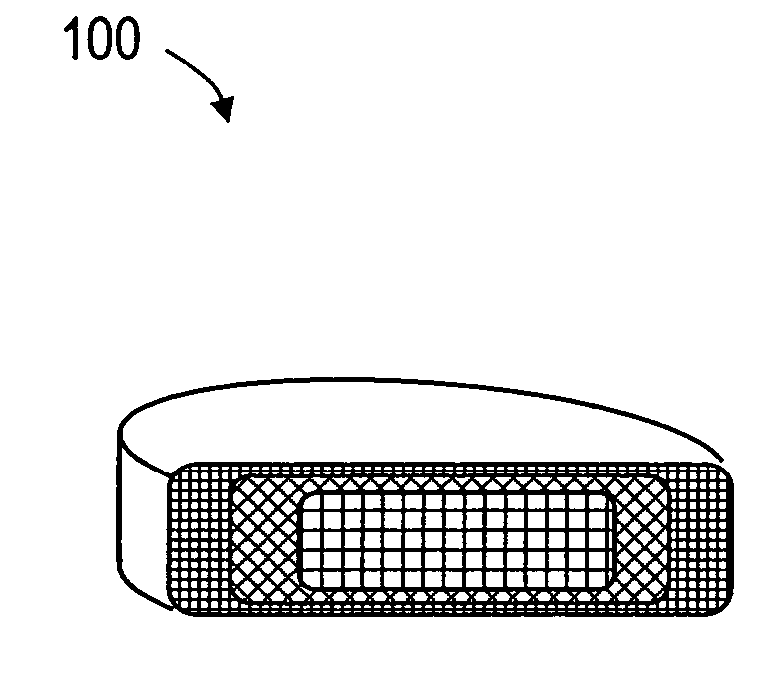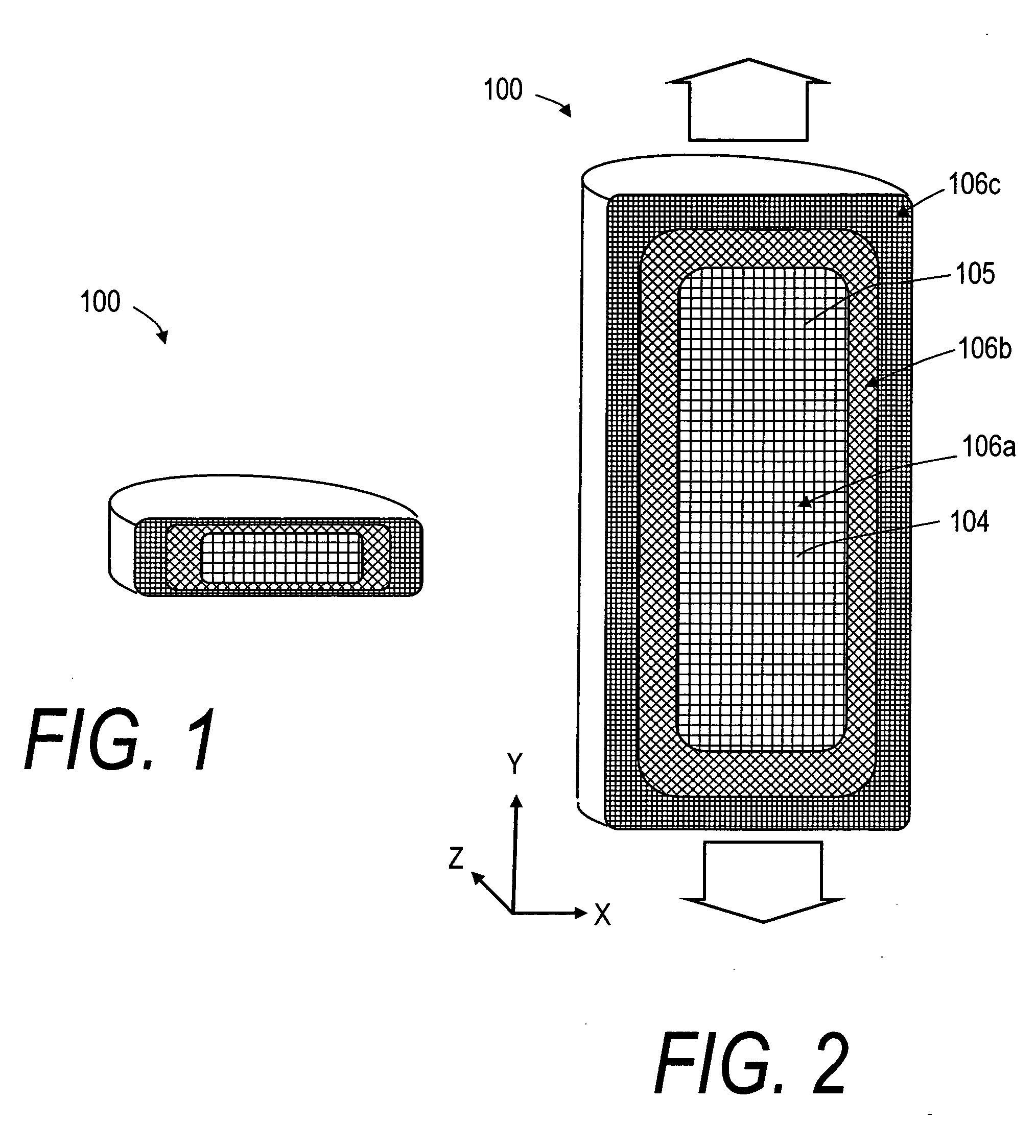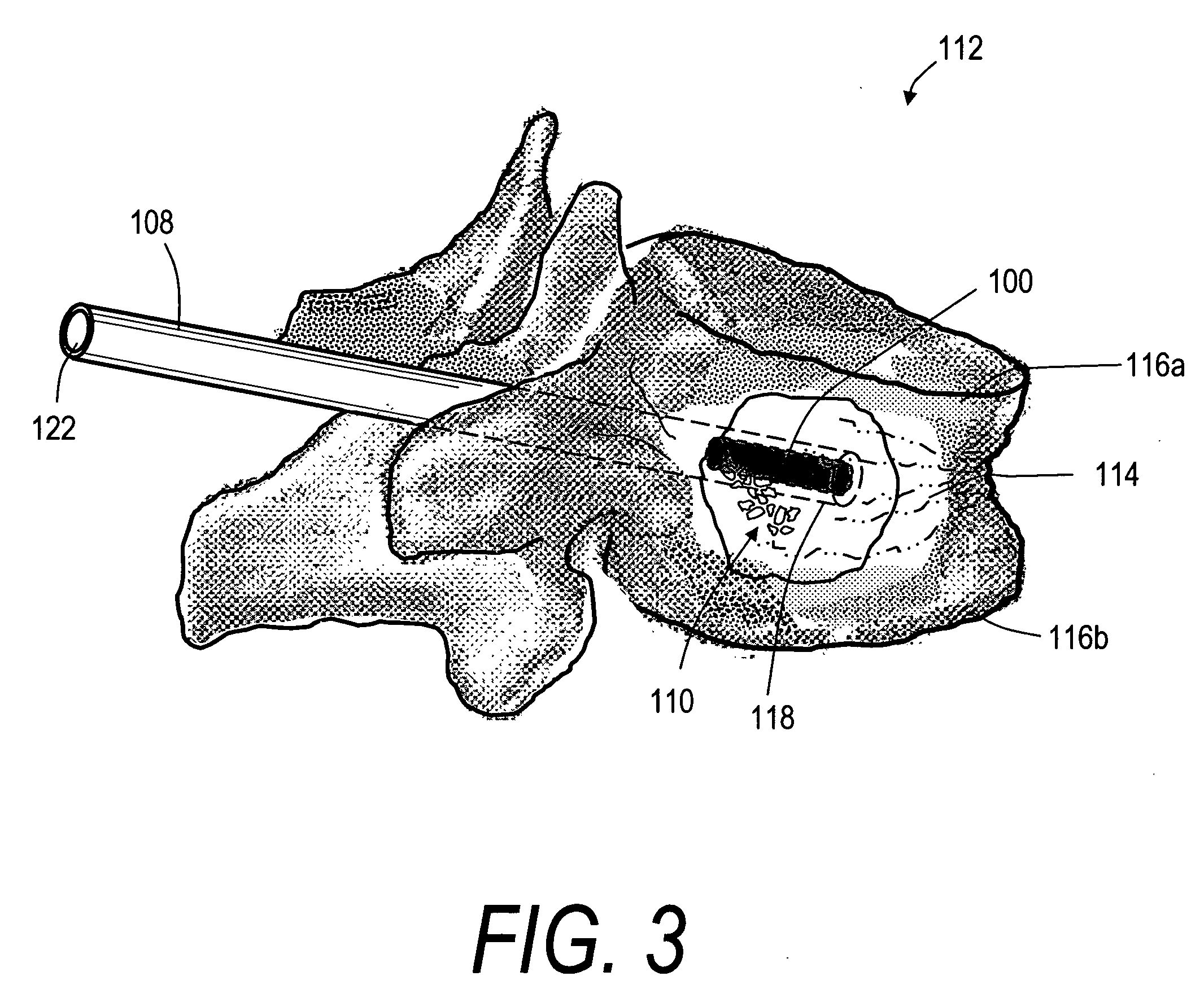Bone treatment systems and methods
a bone and bone technology, applied in the field of bone treatment systems and methods, can solve the problems of fractures in the spine and hips, affecting mobility and quality of life, and the medical advances aimed at slowing or arresting bone loss from aging have not provided solutions to this problem, so as to reduce or eliminate the possibility of pmma extravasion, prevent cement extravasion, and reduce the volume of radiopaque agents
- Summary
- Abstract
- Description
- Claims
- Application Information
AI Technical Summary
Benefits of technology
Problems solved by technology
Method used
Image
Examples
Embodiment Construction
[0033]FIGS. 1 and 2 depict schematic sectional views of an exemplary, deformable flow-through implant body or structure 100 that is configured for treating a fracture in a vertebral body. In FIG. 1, it can be seen that the deformable structure 100 is capable of a collapsed or compacted shape to allow for its introduction into a vertebra through a small diameter sleeve. FIG. 2 illustrates that the deformable structure 100 is capable of extension in a controlled direction relative to x, y and z-axes of the body following the flow of fill material 102 (see FIG. 6) into implant body 100. The fill material 102 can be an in-situ hardenable bone cement, such as a PMMA bone cement that is injected in a common form consisting of (i) a liquid MMA monomer component and (ii) a non-liquid pre-polymerized PMMA bead component. The flow-through structure 100 of FIG. 2 comprises an open web of elements 104 that define flow openings 105 therein. The elements 104 can be filaments or polymer ligaments ...
PUM
 Login to View More
Login to View More Abstract
Description
Claims
Application Information
 Login to View More
Login to View More - R&D
- Intellectual Property
- Life Sciences
- Materials
- Tech Scout
- Unparalleled Data Quality
- Higher Quality Content
- 60% Fewer Hallucinations
Browse by: Latest US Patents, China's latest patents, Technical Efficacy Thesaurus, Application Domain, Technology Topic, Popular Technical Reports.
© 2025 PatSnap. All rights reserved.Legal|Privacy policy|Modern Slavery Act Transparency Statement|Sitemap|About US| Contact US: help@patsnap.com



